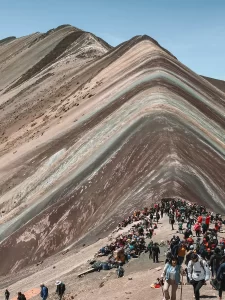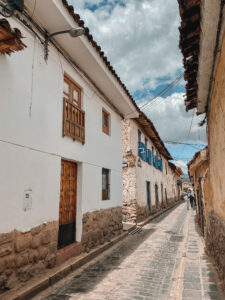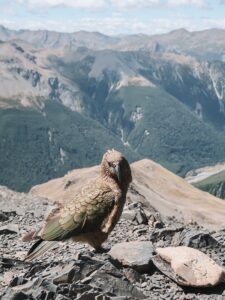On our recent trip to Peru, Ben and I got to tick off a major bucket list item: visiting the incredible Incan citadel of Machu Picchu. When buying our tickets, we decided to add on the hike up Huayna Picchu Mountain. The steep walk offers incredible views, well-preserved ancient ruins, and the chance to see Machu Picchu from a different angle. Hiking Huayna Picchu comes with some logistical hurdles, though, which I’ll explain in the post below. Let’s go!
Disclosure: Some of the links below are affiliate links. When you purchase through links on my site, I may make a small commission (at no extra cost to you!).
General information
- Huayna Picchu elevation: 2,693 m / 8,835 ft
- Elevation Gain: 290 m / 952 ft
- Difficulty: Moderate
- Duration: ~3 hours roundtrip
- Length: 4 km / 2.4 mi roundtrip
- Entrance Times: 7-8 am, 10-11 am
Meaning of Huayna Picchu
The name Huayna Picchu literally translates to Young Mountain. It comes from the Quechua language, which is spoken by the Indigenous people of Peru. Machu Picchu, on the other hand, translates to Old Mountain!
Because the Quechua people didn’t have a well-defined writing system, the name can be written as either Huayna Picchu or Wayna Picchu. You’ll see signs with both spellings — just know that they mean the same thing.
Differences between hikes at Machu Picchu
Want to take a hike while visiting Machu Picchu but don’t know which one? There are 3 different treks within the archaeological site to choose from: Huayna Picchu, Machu Picchu Mountain, and Huchuy Picchu. All three routes require specific entrance tickets (if you want to hike two of the routes on the same day, you’ll need an individual ticket for each hike).
Huayna Picchu is the mountain that features in every postcard photo of Machu Picchu. The trail is steep and short, and it offers great views over the archeological site. There are also a bunch of Incan ruins that you can explore along the way. Only 200 tourists per day are allowed up Huayna Picchu, meaning you should try to buy tickets at least 3 months in advance.
Machu Picchu Mountain (or Cerro Machu Picchu) is the peak that sits behind the Incan city. Hiking Machu Picchu Mountain is less steep than Huayna Picchu, but takes longer because of the additional distance. There are no archeological ruins on the Machu Picchu Mountain hike. 400 tickets are released per day, and should be bought at least 3 weeks in advance.
Huchuy Picchu (meaning “Little Mountain”) is the shortest and easiest of the 3 Machu Picchu hikes. With a maximum height of 2,497 m (8,192 ft), the summit is only 50 m (164 ft) higher than the archeological ruins, making it accessible for most people. 200 tickets to Huchuy Picchu are released per day.
These 3 hikes are just the ones that are located within the Machu Picchu complex itself — there are also a few multi-day hikes that you can take to get to Machu Picchu from Cusco or the Sacred Valley. These include the iconic Inca Trail, Salkantay Trail, Vilcabamba Traverse, and Lares Trek.
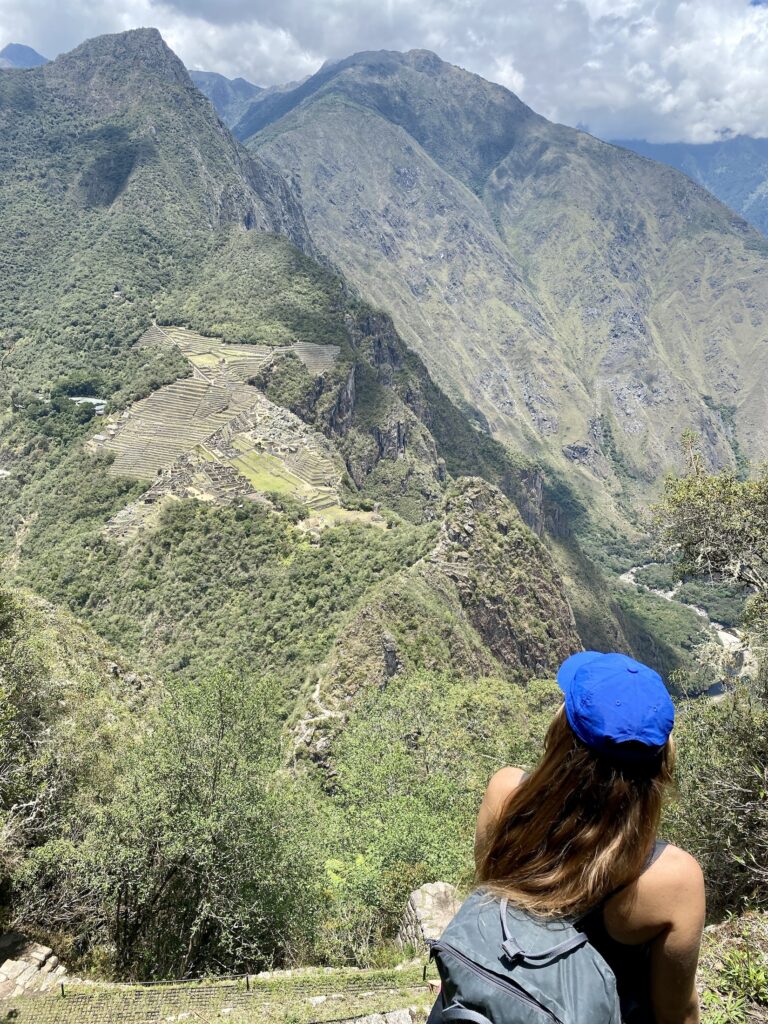
Tickets
Machu Picchu circuits explained
Before purchasing your entrance ticket, you’ll need to decide whether you want to take a hike at Machu Picchu. There are two types of tickets: Machu Picchu only (just the archeological site) and Machu Picchu plus a hike.
Machu Picchu only (no hikes)
If you’re not keen on taking one of the 3 hikes, you’ll have 4 different circuits (or routes) around the archeological site to choose from. Circuit 2 is the most popular and recommended for most people.
- Circuit 1: Upper and lower parts of the site (shorter version); takes ~2 hours
- Circuit 2: Upper and lower parts of the site (longer version); takes ~2.5 hours
- Circuit 3: Lower part of the site (shorter version); takes ~1.5 hours
- Circuit 4: Lower part of the site (longer version); takes ~2.5 hours
Machu Picchu plus a hike
These tickets include a circuit around Machu Picchu and entrance to one of the hikes. Unfortunately, you can’t pick and choose which circuit you want to take if you decide to do a hike — you’re bound to the specific circuit listed on your ticket. Keep in mind that these tickets are also the quickest to sell out, so make sure to buy your Huayna Picchu tickets as soon as you can!
- Huayna Picchu: Circuit 4
- Machu Picchu Mountain: Circuit 3
- Huchuy Picchu: Circuit 4
Entry times
After selecting the Circuit 4 + Waynapicchu Mountain ticket, you’ll need to decide on an entry time. Your Huayna Picchu Mountain hike entrance time is staggered into 4 groups based on what time you enter Machu Picchu.
| Group | Machu Picchu entrance time | Huayna Picchu entrance time |
|---|---|---|
| #1 | 6:00 – 7:00 am | 7:00 – 8:00 am |
| #2 | 7:00 – 8:00 am | 8:00 – 9:00 am |
| #3 | 8:00 – 9:00 am | 9:00 – 10:00 am |
| #4 | 9:00 – 10:00 am | 10:00 – 11:00 am |
Huayna Picchu ticket cost
For foreign tourists:
- Adults: S/200 ($50.28 USD)
- Students (with a valid international student card): S/125 ($31.42 USD)
- Minors (between the ages of 3 and 17): S/118 ($29.66 USD)
For Peruvian and Andean Community citizens (Bolivia, Colombia, and Ecuador):
- Adults: S/112 ($28.15 USD)
- Students: S/80 ($20.11 USD)
- Minors: S/80 ($20.11 USD)
You can either buy your ticket from the government’s official website or through GetYourGuide. The latter ends up being a bit more expensive, but the website is much more user-friendly and they have an excellent cancellation policy. Because the Circuit 4 + Huayna Picchu tickets sell out so quickly, I wouldn’t recommend trying to buy your tickets in person once you’re in Peru.
Ticket rules + regulations
- You need to have an official guide to enter Machu Picchu. Our hotel in Aguas Calientes arranged one for us the night before. We agreed to a price of $65 USD (S/259) for two people. You can also find a guide at the Machu Picchu Citadel gates right before entering, but it may be more expensive. Besides being mandatory, I would highly recommend finding a good guide — it made the experience so much more interesting!
- You’ll need your passport to enter Machu Picchu and again when starting each of the hikes.
- Each circuit is one way only and you are not allowed to backtrack.
- Re-entry into Machu Picchu is not allowed once you exit, unless you have a Circuit 3 + Machupicchu Mountain ticket.
- There is a (loosely enforced) 4 hour time limit once you’re inside Machu Picchu. Most tourists won’t spend any longer than that.
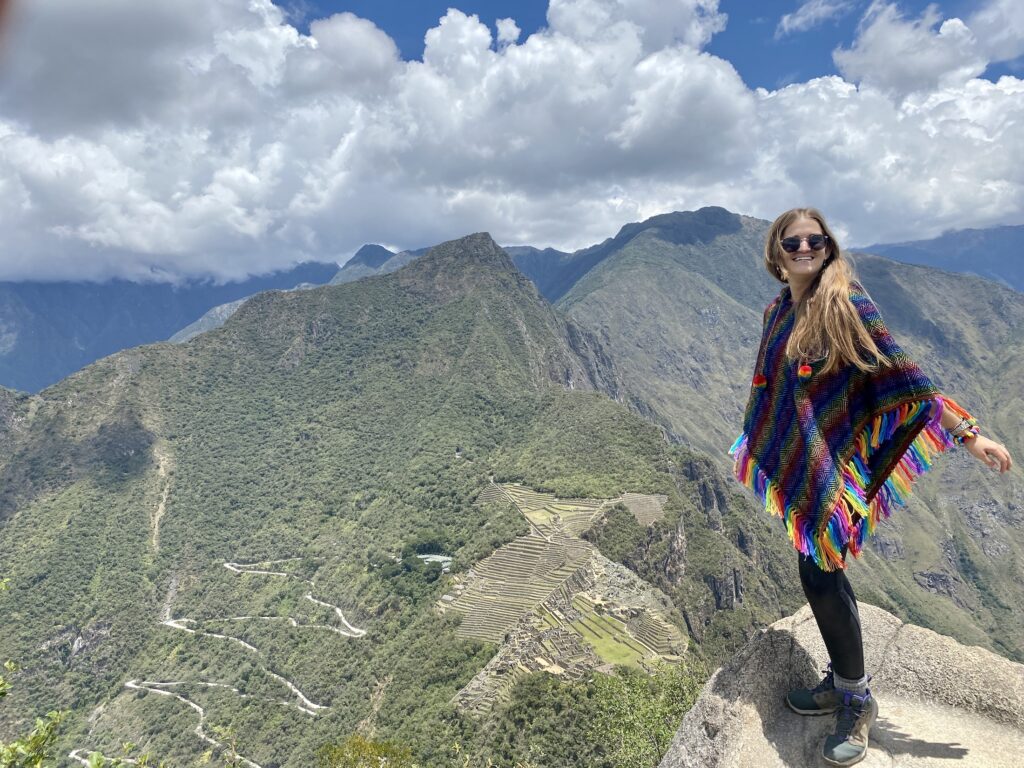
When to visit
Time of year
Peru has two distinct seasons: rainy and dry. The dry season generally runs from April through mid-October, and is the best time to go if you’re after sunny days. Dry season is also the high season, though, so you’ll likely encounter more crowds and more difficulty securing tickets. You can assume that most days between mid-May and August will be crowded.
Some other crowded times at Machu Picchu include:
- Christmas and winter breaks: Late December to mid-January
- Spring break: Late March/early April
- Any major national or religious holidays in Peru
- Peru Independence Day: July 28
Rainy season is from mid-October through March. You’re less likely to visit on a clear day, but you get the added bonus of fewer people in general. According to our tour guide, it can rain for several days straight during the wet season, so keep that in mind!
If hiking the classic Inca Trail is part of your itinerary, make note that it closes for maintenance for the entire month of February.
Time of day
Once you’ve decided what time of year you’ll visit, you’ll need to decide what time of day works best for you. Since there are several staggered time slots, it can be hard to know which one is best!
Early mornings can be a great option if you can handle the early wakeup time. If you arrive with the first group right at 6 am, then you’ll beat most of the afternoon crowds and could watch the sun come up over the mountains. Finishing your Machu Picchu tour earlier in the day also gives you enough time to enjoy a leisurely afternoon before your train in Aguas Calientes. Machu Picchu is known for its early morning fog, though, so you could be waiting a while for an unobstructed view.
Arriving later in the morning gives you more flexibility in terms of timing, but will probably be more crowded. You’ll also have to deal with hiking Huayna Picchu during the hottest and sunniest part of the day. On the other hand, you’re more likely to get a clear view from the top of the mountain.
We arrived at Machu Picchu in the latest group at 9 am, and thought it was the best option. The weather ended up being perfect and we didn’t have to wake up super early. Woohoo!
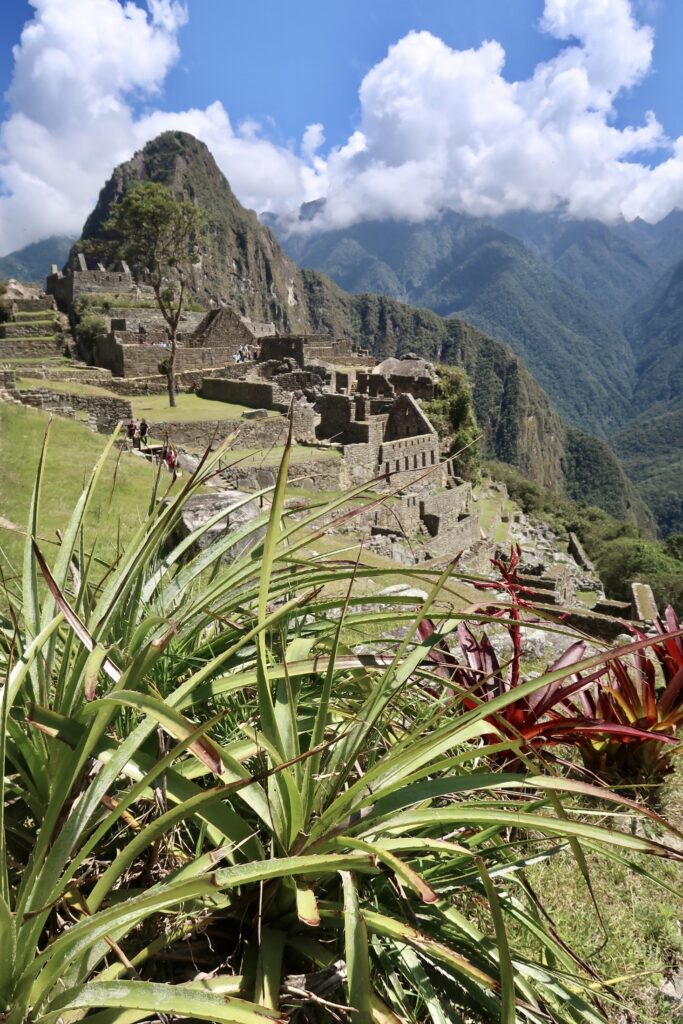
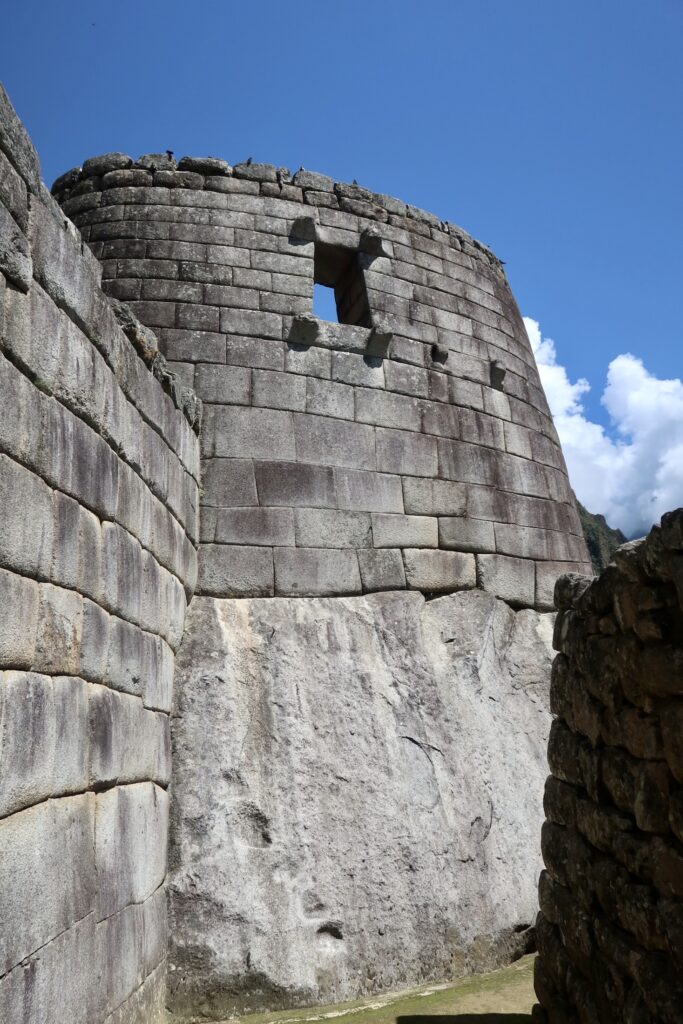
Getting to Huayna Picchu
Cusco – Ollantaytambo
Option 1: Take a shared bus with Real Inka. The journey takes about 1 hour and 30 minutes. Tickets cost $5 USD (S/19.88) one-way and can be purchased online or at the station. This is the cheapest option, but the buses can sometimes be crowded and/or late.
Option 2: Take a private taxi. There are several different companies that offer pick-up and drop-off services between Cusco and Ollantaytambo, including Taxi O’Qarina, Rapi Taxi, and Aló Cusco. You can expect to pay anywhere between $35 and $50 USD (S/139-198).
Option 3: Take a guided tour through the Sacred Valley that picks you up in Cusco and ends in Ollantaytambo. This is the option we chose because we wanted to kill two birds with one stone. Our tour got us from Point A to Point B and it showed us all of the places we wanted to see along the way.
The tour below is the exact one we chose, and I’d highly recommend it! We stopped at the Mirador Taray observation deck, Pisac Archaeological Park, Maras Salt Mines, and Ollantaytambo Ruins. Lunch was included in the ticket price, and it was in the form of a delicious buffet. Our tour guide was awesome and taught us a lot about the places we saw.
Ollantaytambo – Aguas Calientes
Option 1: Take the train. Other than taking a challenging multi-day hike, this is the only realistic option and the one that the vast majority of people choose. There are two companies that offer trains between the two towns: Inca Rail and PeruRail. Both companies are pretty similar, with comfortable trains and many schedule options. The trip takes an hour and a half and is spectacularly scenic, winding through valleys and around the Urubamba River. You can expect to pay around $150 USD roundtrip per person.
Option 2: Hike the Inca Trail. This 4-day, 3-night trek is one of the most famous hikes in the world. It goes from Km 82 (about 40 minutes outside of Ollantaytambo) to Machu Picchu’s Sun Gate (also known as Inti Punku). The Inca Trail requires a ton of advance preparation and the booking of a guided tour.
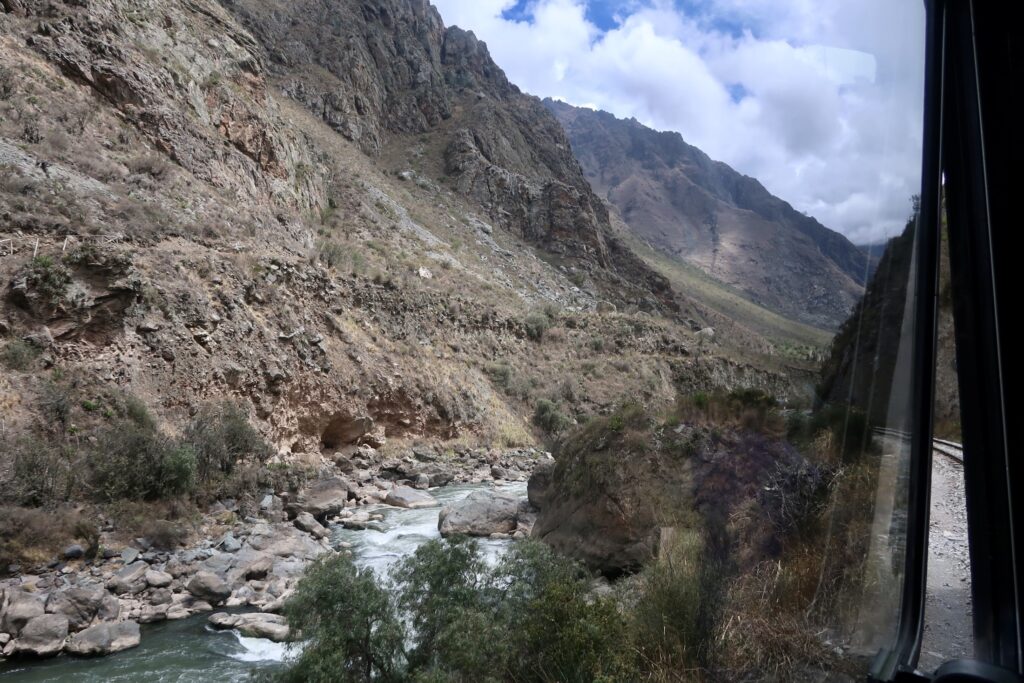
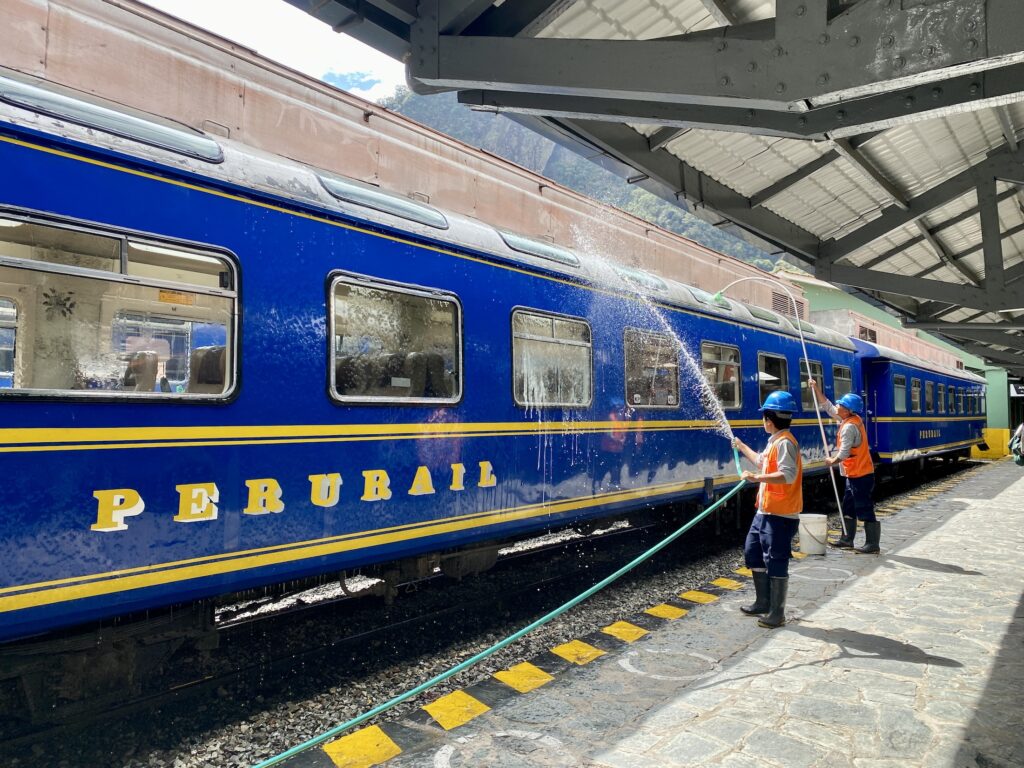
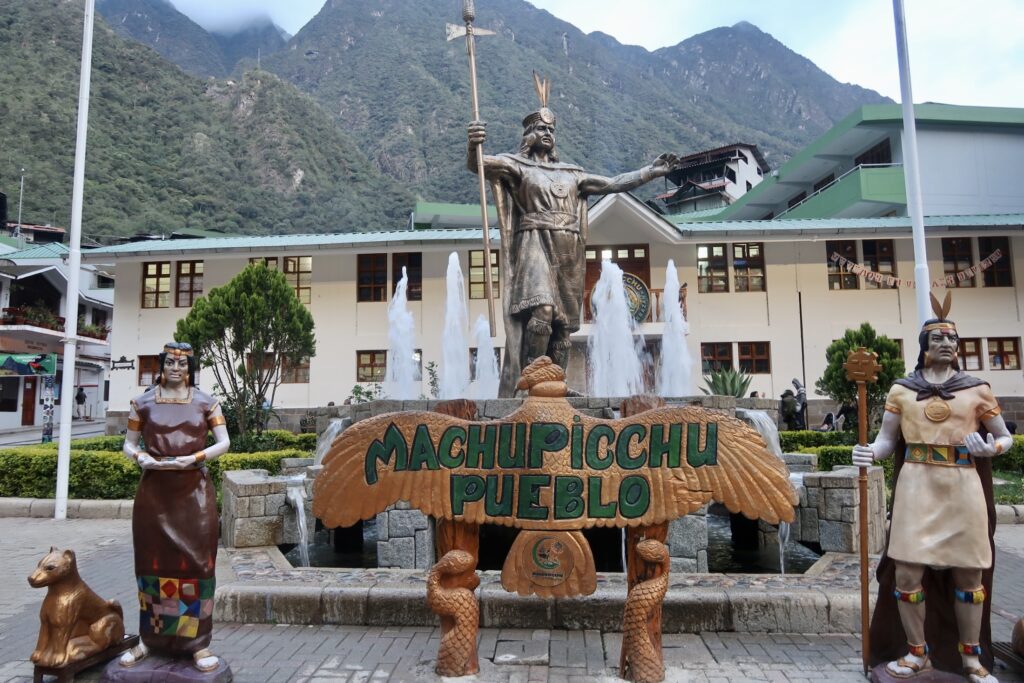
Aguas Calientes – Machu Picchu entrance
Option 1: Take the bus. This option is super simple and saves you a bunch of time and energy, especially if you’ll be hiking Huayna Picchu later! Large and comfortable coach buses leave from Aguas Calientes town centre about every 5 minutes from 5 am to 5:30 pm. The ride up the side of the mountain takes ~20 minutes. You can either buy tickets at the bus station or online from Consettur in advance. Tickets cost $24 USD (S/95) roundtrip per person.
Option 2: Hike the Camino Peatonal Trail. This track from Aguas Calientes to Machu Picchu is 8 km (5 mi) long, with an elevation gain of 389 m (1,279 ft). The walk is strenuous, mostly uphill, and takes a little over 2 hours to complete. For those with extra time and good physical condition, the hike could be a fun way to save some money!
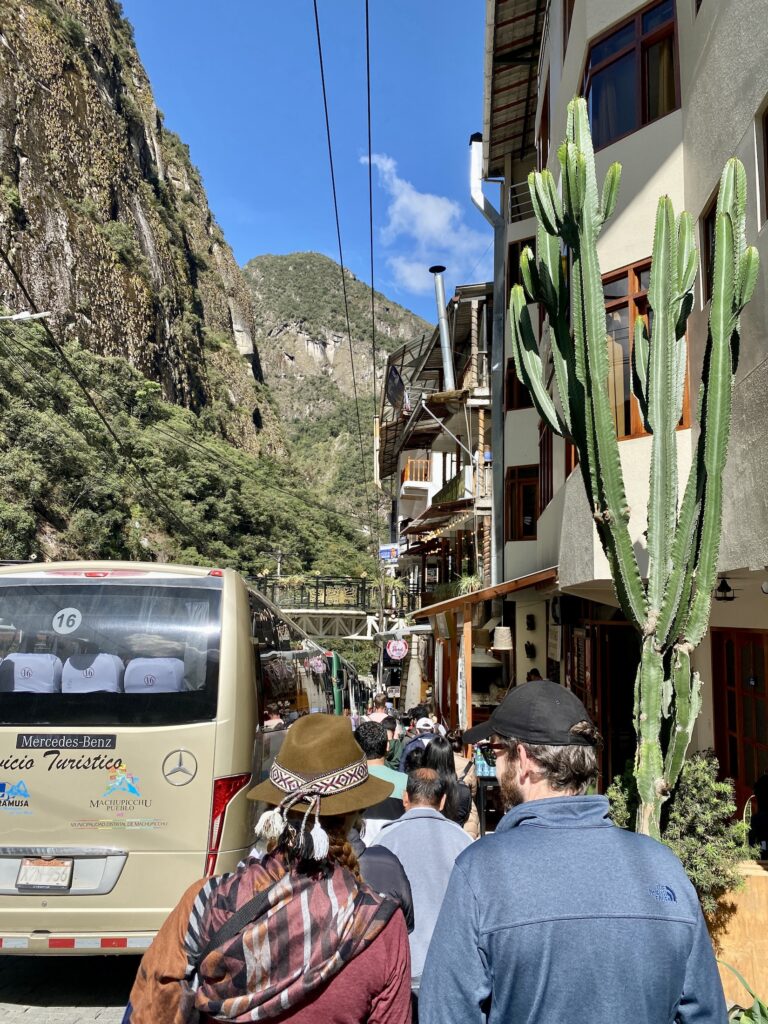
Machu Picchu entrance – Huayna Picchu trailhead
Once you’ve made it inside the Machu Picchu gates, your tour guide will lead you through Circuit 4. You’ll get to see several cool Incan ruins, including the Sun Temple, House of the Inka, Sacred Square, Intihuatana (an astronomic clock/calendar), and the Sacred Rock.
Our tour took pretty much exactly an hour and a half. We got to Machu Picchu at 9 am and were at the Huayna Picchu entrance at around 10:30 am. Our guide led us to the right place, made sure we got through the hiking control booth, and then left us to hike Huayna Picchu on our own.

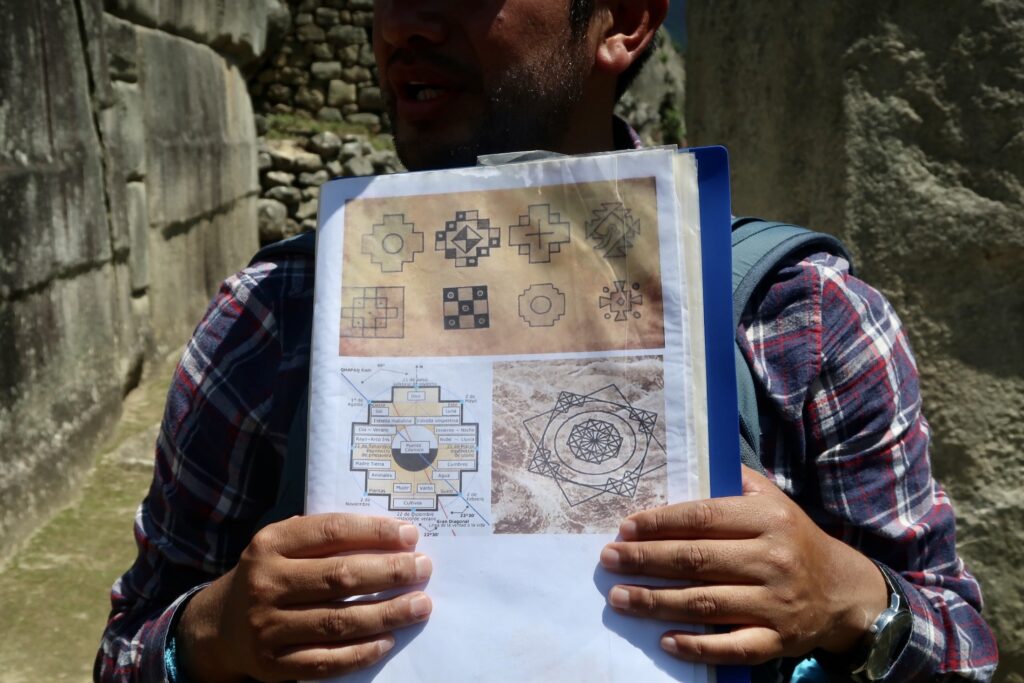
Hiking Huayna Picchu
Part 1: The start
Your guided tour should finish near the Sacred Rock (also known as Wank’a Quechua). From there, you’ll need to stop at the Huayna Picchu control booth before starting your hike.
The staff at this little warden’s hut will ask you to fill out some information in their log book. You’ll need to enter your name, passport number, and time of the day you’re starting your hike. On the way down, you’ll also fill out what time you made it down the mountain.
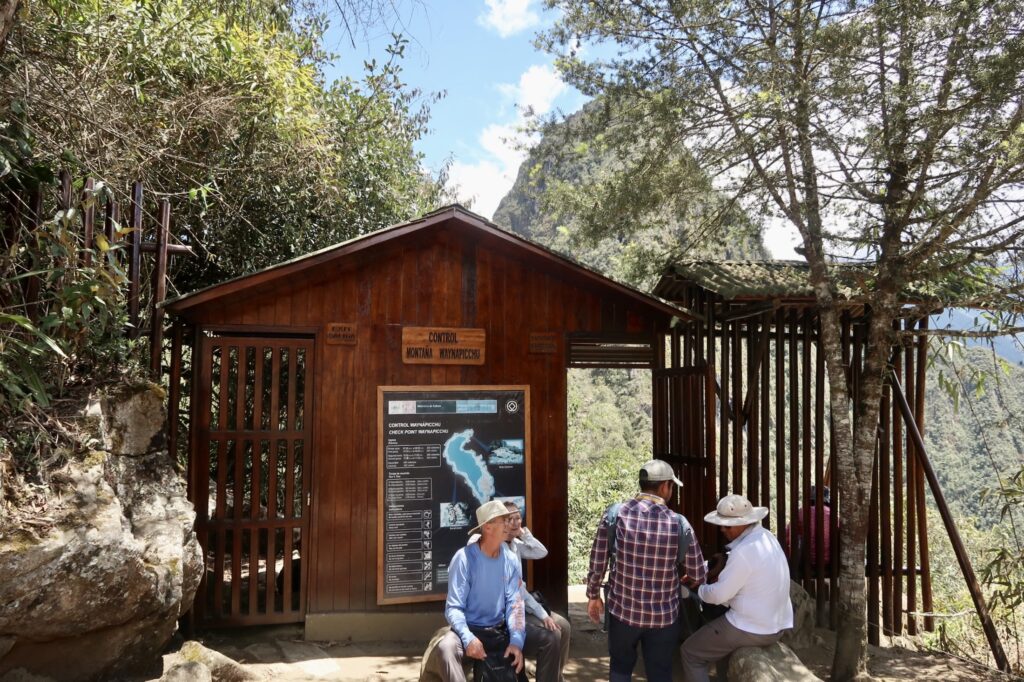
Part 2: The ascent
The Huayna Picchu hike starts off with a narrow trail and a bunch of stone steps. At certain points, there are steel cables built into the side of the mountain to hold on to.
Initially, the view is shrouded by the thick foliage all around you. Eventually, though, the path opens up and you get a view of the surrounding mountains. Mountain Huayna Picchu stands in the foreground and looks impossibly steep. Don’t worry — the trek isn’t actually as perilous as it looks!
A bunch of steep switchbacks later and you’ll reach the first of the Incan ruins.
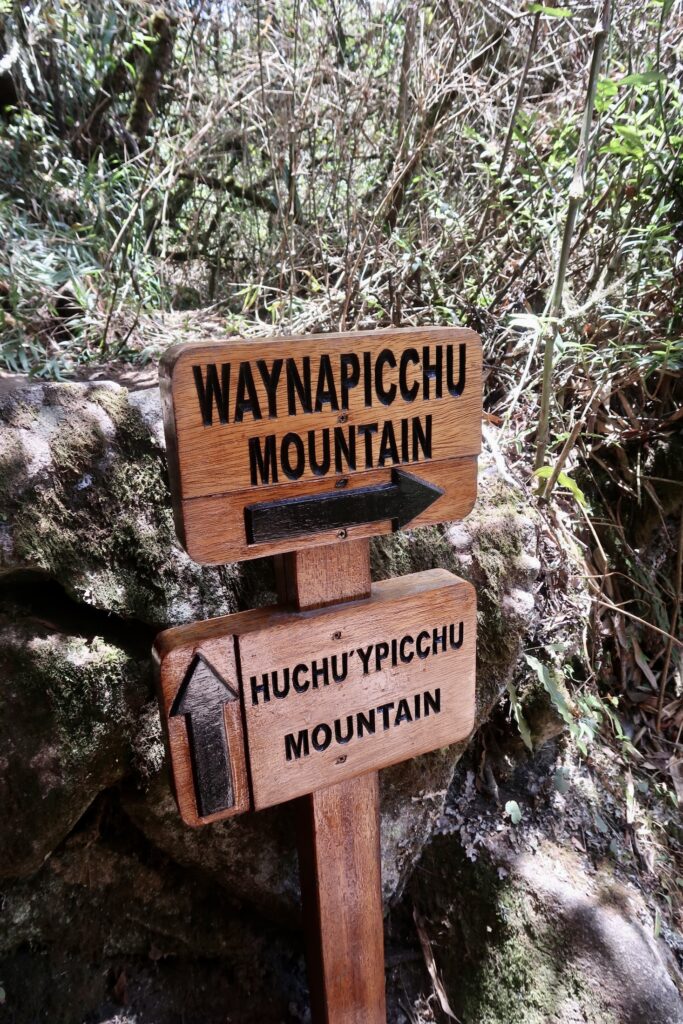
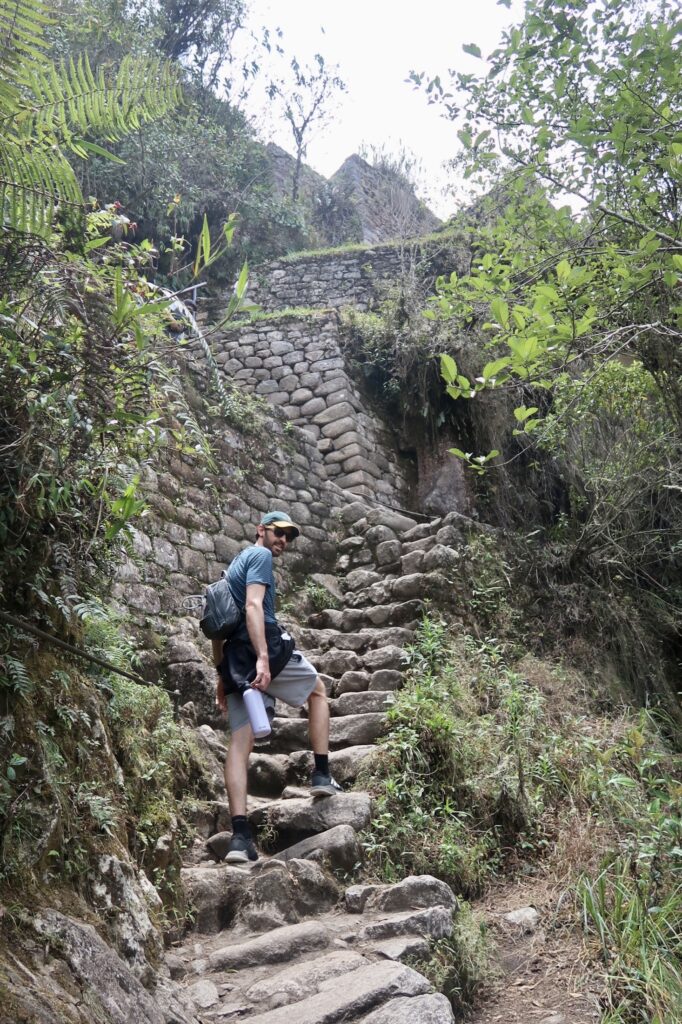
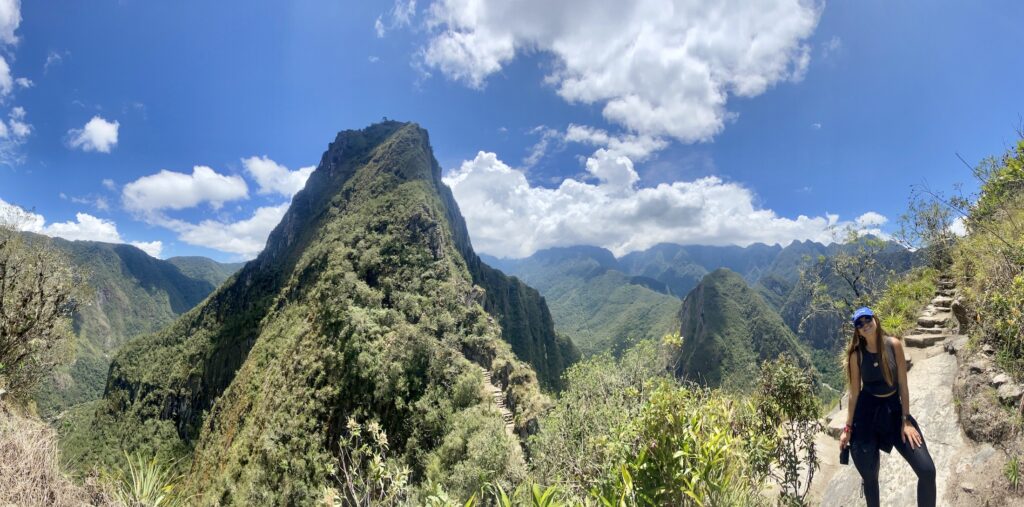
Part 3: The Stairs of Death Peru
Oooooh, intimidating.
Once you’ve made it most of the way up the mountain, you’ll encounter the ancient Inca-built Stairs of Death. These original stairs date back to the 1400s and are honestly a marvel of architectural design.
Stick towards the inner walls and try not to look down! These steep steps are scarier looking than they are dangerous. And although they’re called the Huayna Picchu Stairs of Death, no tourists have actually died here (phew).
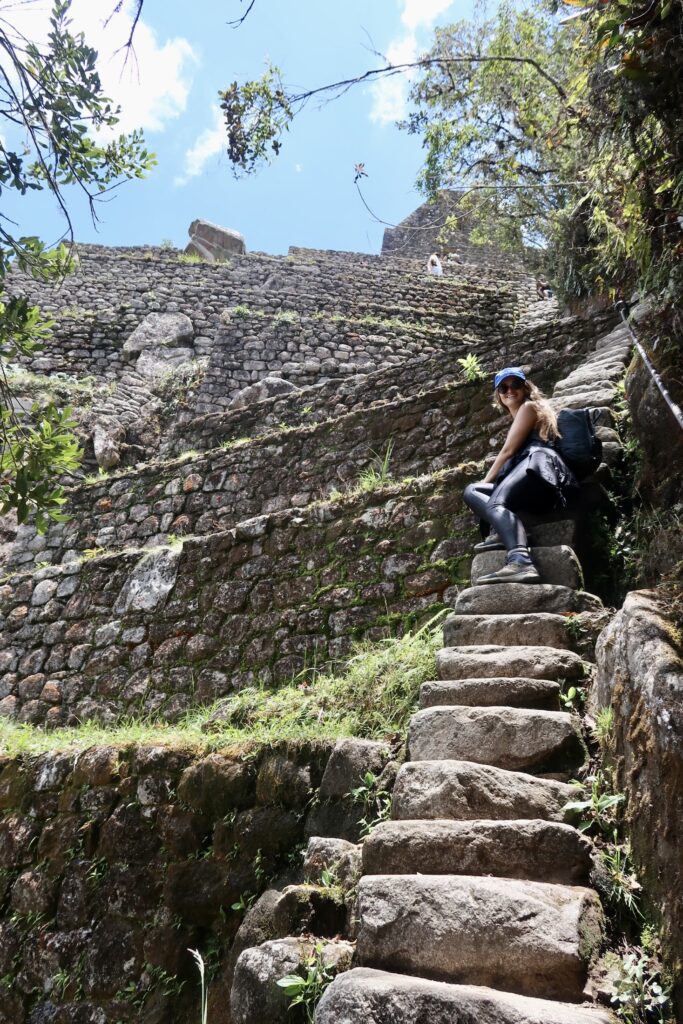
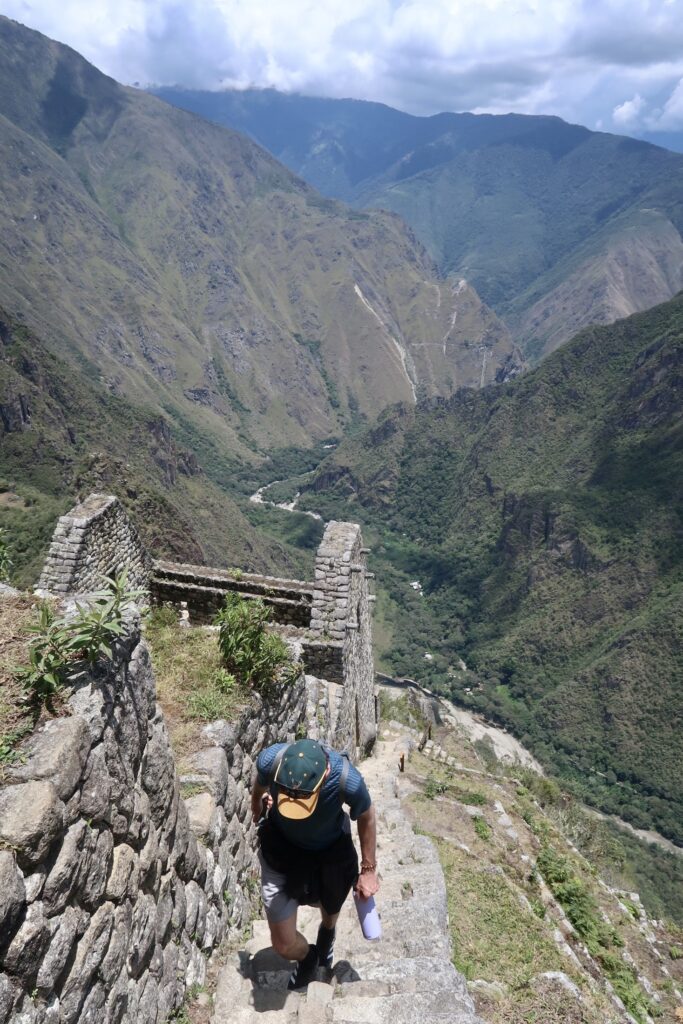
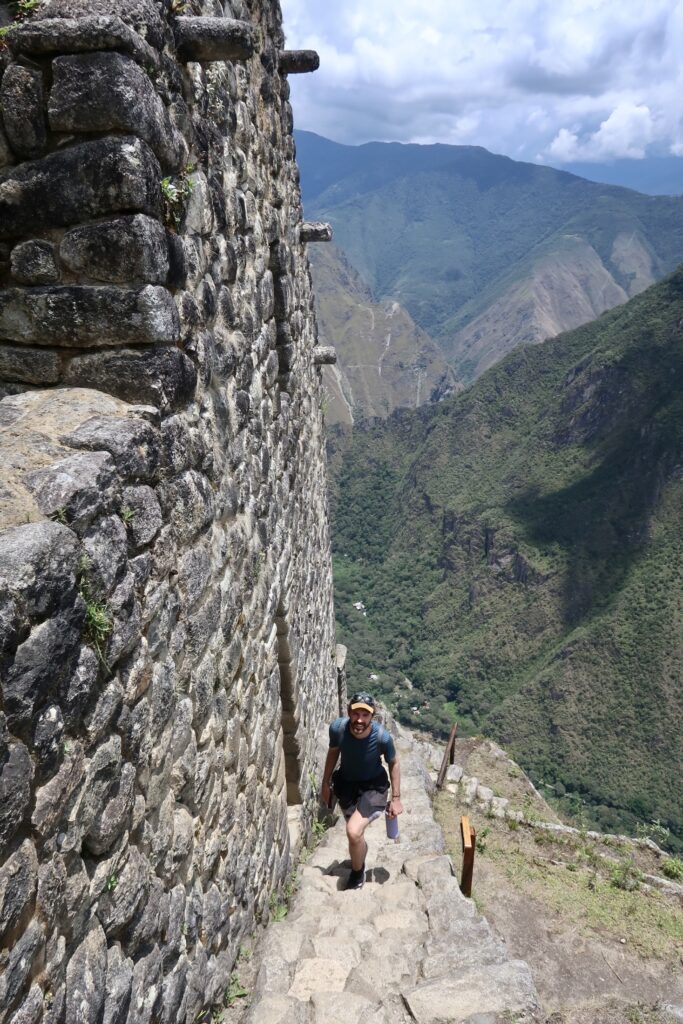
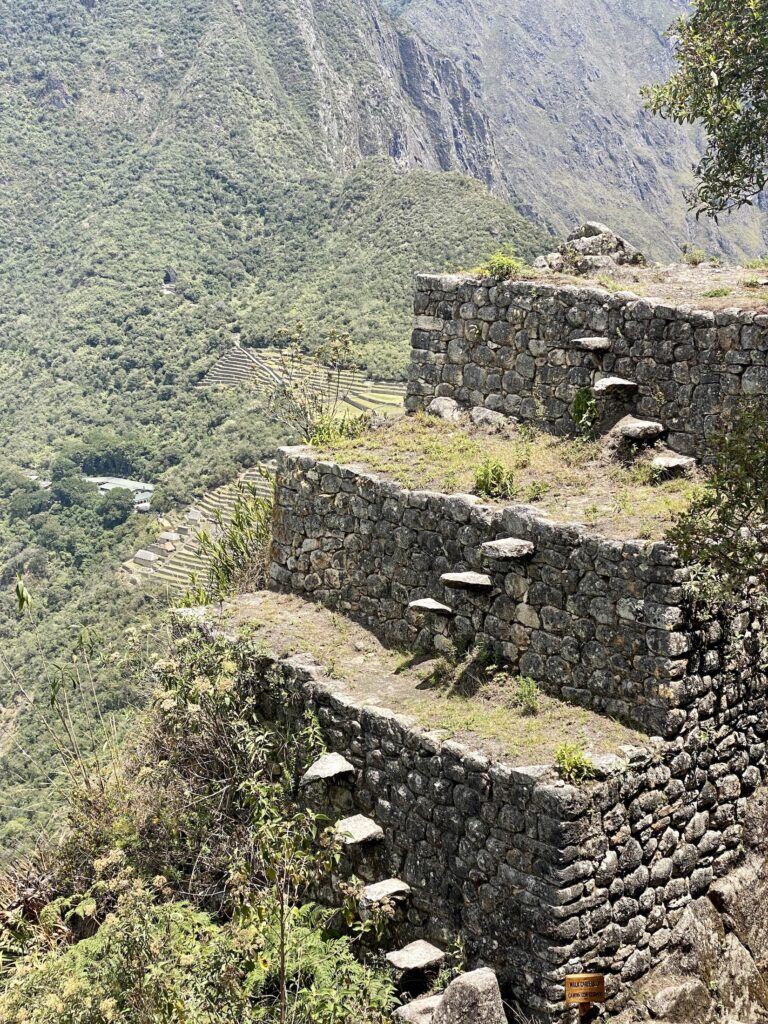
Part 4: The summit
From the top of Huayna Picchu, you can enjoy incredible views of the Machu Picchu ruins, Urubamba River, and surrounding mountain tops. A structure called the Throne of the Inca makes a good place to take a few pictures and soak in the view.
The summit of Huayna Picchu was the most crowded area of the hike for us. Be aware of your personal bubble and make sure to leave room for others to hang out, too.
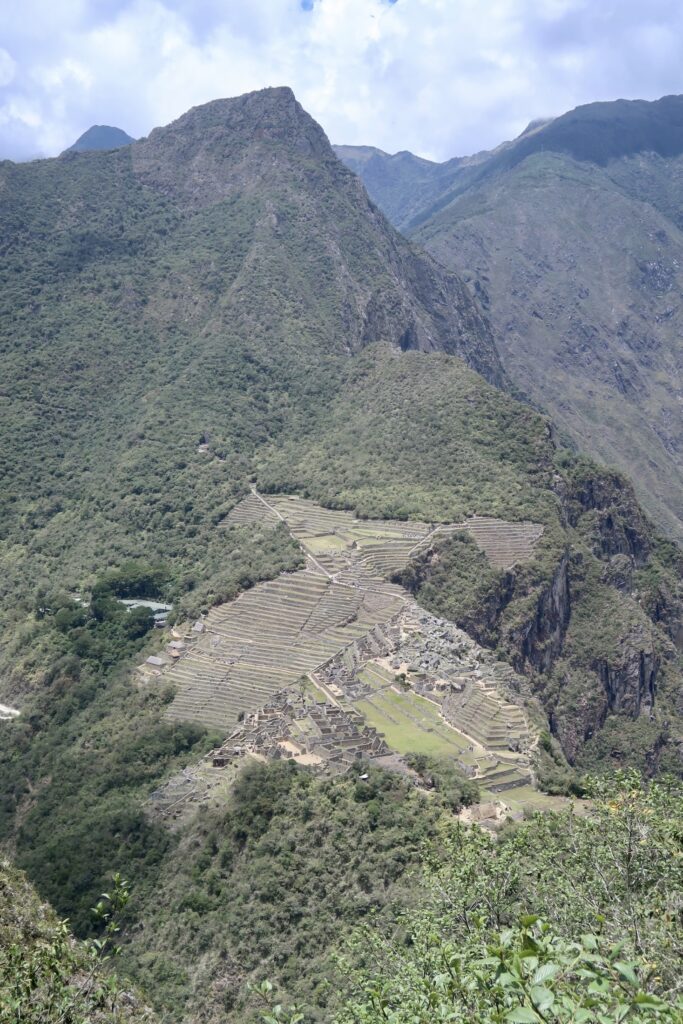
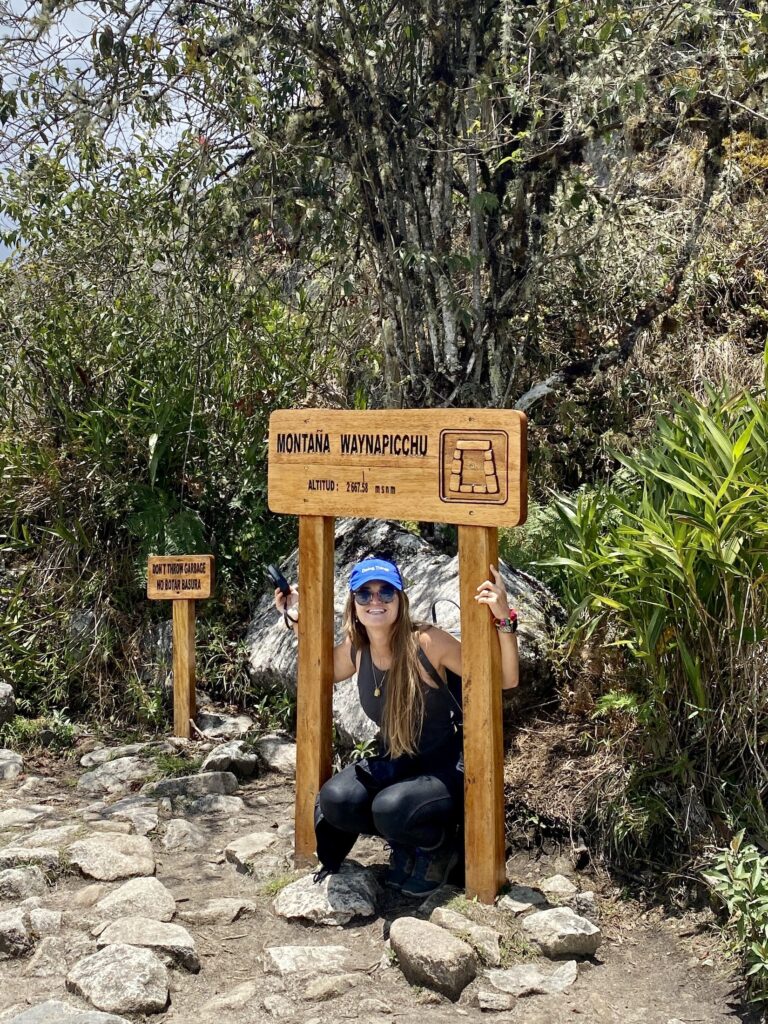
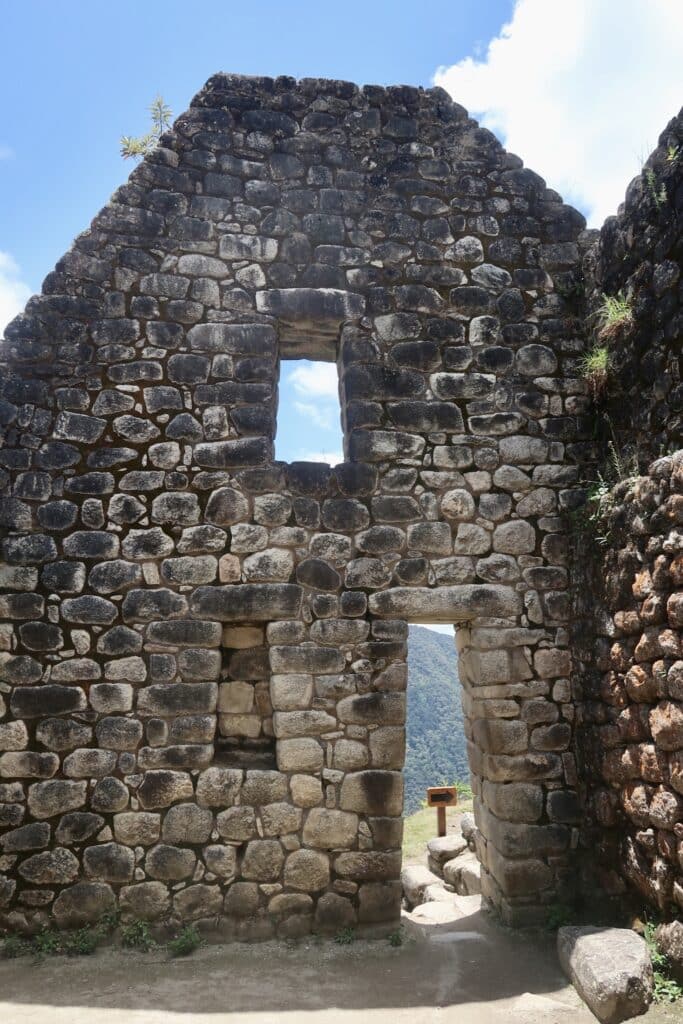
Part 5: Temple of the Moon
At this point, you’ll need to make a choice about what you want to do next. You can either finish the loop and head back down the mountain, or you can branch off onto the optional Temple of the Moon trail.
This trail adds an additional 45 minutes onto your hike. It crosses through a 1,500-year-old temple built into a cave on the mountain’s edge. Historians aren’t completely sure what the temple was used for, but they think it was either for rituals, sacrifices, or to worship the moon.
Part 6: The descent
Whichever route you choose to take, you’ll make your way down the mountain on the same trail you took to get up. Again, take care on the stairs and hold on to any rails or cables along the way.
Once you’ve made it back down to the Huayna Picchu hut, you’ll sign yourself out in the book and exit back into Machu Picchu. There are a few more archeological structures to look at before leaving, including the Temple of the Condor, a sacrificial altar in the shape of a bird.
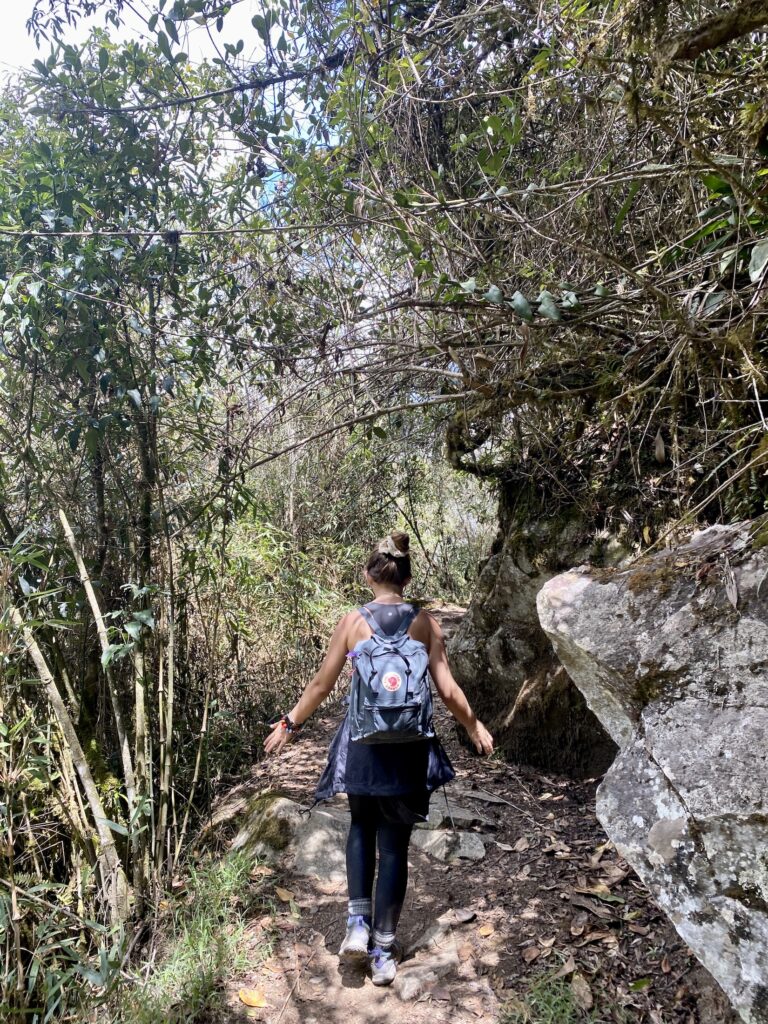
Huayna Picchu packing guide
- Rain jacket: Protect yourself from getting wet, just in case
- Fun poncho: To take pictures in!
- Sunscreen: Absolutely necessary — the altitude makes UV rays stronger
- Insect repellant: There are lots of mosquitos, so make sure to get one with a lot of DEET
- Sunglasses: To protect against the strong sunlight
- Water bottle: For hydration
- Sun hat: Keeps you cool
- Chapstick: Make sure to get one with SPF
Altitude sickness when hiking Huayna Picchu
Altitude sickness is a common gripe for travelers to Peru. Many of us live close to sea level and aren’t used to the outrageously high altitudes you’ll find in the Peruvian Andes. Some common symptoms of altitude sickness include headache, nausea, and fatigue. These can get worse the higher you climb, and although they’re usually mild, they can in some cases become fatal.
How to avoid altitude sickness in Peru:
- Spend as much time as you can acclimatizing to higher altitudes before setting out on any strenuous hikes. The longer you spend at altitude, the more adjusted your body will be to the thinner air and lack of oxygen!
- Try chewing on coca leaves or consuming coca-infused tea, candy, or chocolates. Coca leaves have been used by the Andean people for generations to soothe the effects of altitude sickness.
- Drink plenty of water, especially when exercising. In addition to plain water, water with added salt or electrolytes will help replenish vital nutrients lost when you sweat.
- If your symptoms are getting worse very quickly, the best thing to do is to descend to a lower altitude and seek medical advice as soon as possible.
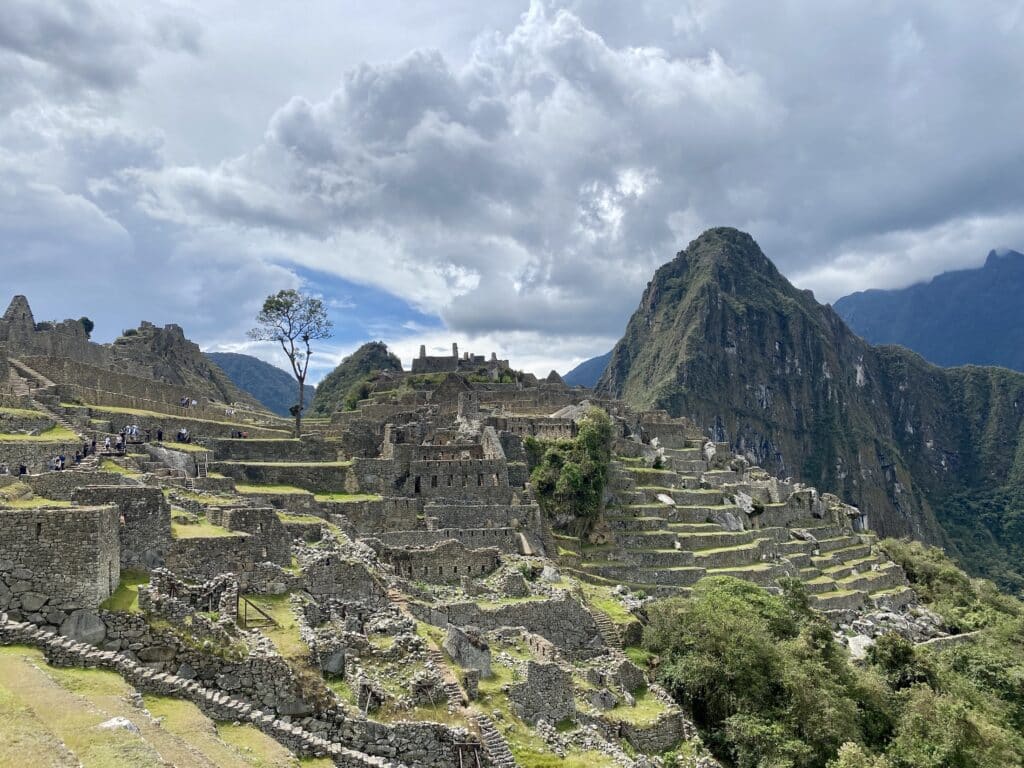
Huayna Picchu FAQ
Is the Huayna Picchu hike safe?
Yes! Despite its scary appearance, the Huayna Picchu hike is completely safe (as long as you follow some common-sense guidelines).
Make sure to hold on to any supportive railings and cables, don’t walk too close to the edge, be aware of your surroundings, and take your time walking up and down the stairs.
There are guides stationed along the trail as well, so they can help if you run into any trouble. Sign in and out of the book at the entrance and always let someone else know where you’re planning to hike and when you expect to be back.
How difficult is the Huayna Picchu hike?
Hiking Huayna Picchu is moderately difficult. The walk is steep at certain points, but it isn’t overly long or harrowing by any means. Any person with a relatively average level of fitness should be able to complete the hike without any major problems.
Huayna Picchu’s elevation does make the hike more challenging, however. With a summit altitude of 2,693 m (8,835 ft), some people will be prone to altitude sickness, especially if they haven’t acclimatized beforehand. For the best outcomes, try to spend a few days in Cusco (elevation 3,399 m/11,151 ft) before heading to Machu Picchu.
Do you need a guide for Huayna Picchu?
No, you are not required to have a guide with you while hiking Huayna Picchu. You are required, however, to have one while touring the archeological site of Machu Picchu. Most guides will lead you through the site before depositing you at the Huayna Picchu trek trail head.
Is the Huayna Picchu hike worth it?
Ab-so-lutely. The views are stunning and completely unique to what you see within the Machu Picchu Citadel itself. It’s also incredible to see the outstanding architecture perfected by the Incas hundreds of years ago — getting to walk through ruins on the side of a mountain is such a cool experience.
Machu Picchu is amazing in and of itself, but is made even better with the addition of the Huayna Picchu hike.
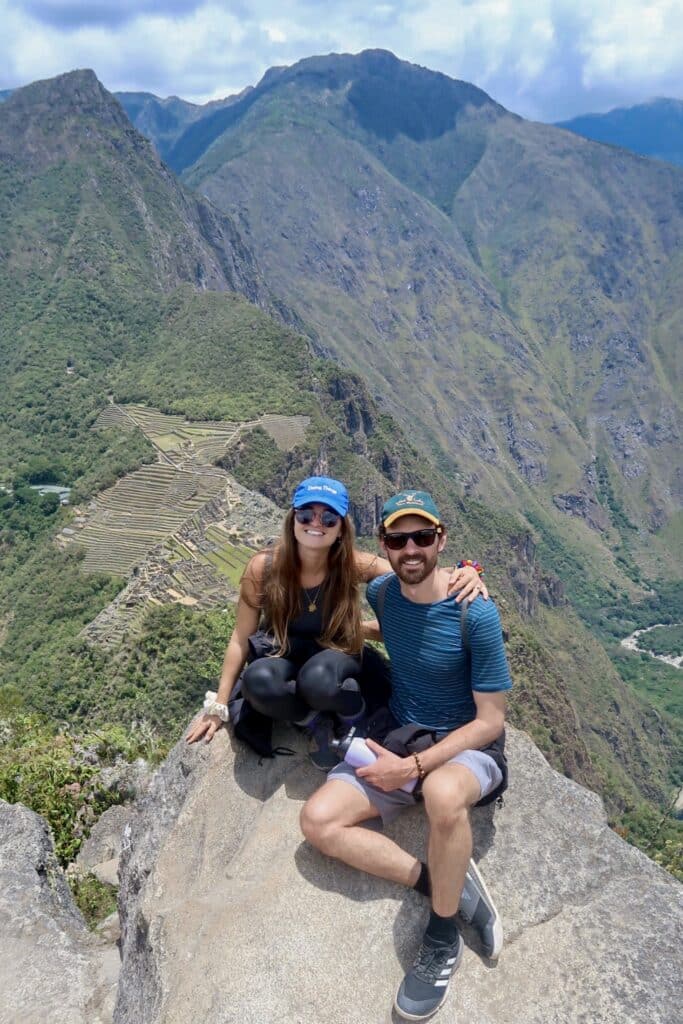
You’ll also love:
- How Much Does an Iceland Trip Cost? My 12-Day Budget Breakdown
- The Perfect 2-Day Rocky Mountain National Park Itinerary
- Royal Gorge Cabins: The Best Glamping in Cañon City, Colorado
Thanks for reading this guide to hiking Huayna Picchu! Look out for a ton more posts about Peru coming soon.
xoxo Niki
Like it? Pin it!
